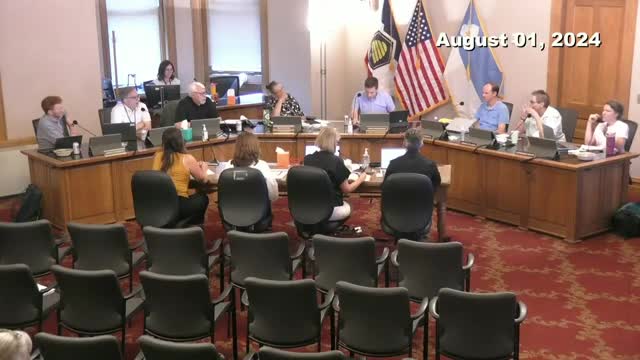Pioneer Park redesign sparks debate over historical significance
August 02, 2024 | Salt Lake City Council, Salt Lake City, Salt Lake County, Utah

This article was created by AI summarizing key points discussed. AI makes mistakes, so for full details and context, please refer to the video of the full meeting. Please report any errors so we can fix them. Report an error »

During a recent government meeting, officials and community members engaged in a spirited discussion regarding the design and historical significance of the new ranger station at Pioneer Park in Salt Lake City. The park, recognized as the Old Pioneer Fort Site and listed on the National Register of Historic Places, has a rich history dating back to the arrival of pioneers in the Salt Lake Valley.
Participants expressed concerns that the current design of the ranger station fails to reflect the historical essence of the site. One speaker emphasized the need for the structure to tell the story of the park's past, suggesting the incorporation of public art that draws from the area's pioneer heritage. Ideas included murals and historical plaques that could narrate the park's evolution and its significance as the last remaining public square in the city.
The discussion also highlighted the importance of addressing the building's blank walls, which face a public street, and the potential for these surfaces to be enhanced with artistic elements. Suggestions included using panels for rotating exhibits or text that could educate visitors about the park's history, including its Indigenous roots.
Concerns were raised about the park's frequent redesigns, with some participants questioning whether the latest iteration would adequately honor its historical legacy. The need for a cohesive narrative that connects both the past and present was emphasized, with calls for the ranger station to serve as a starting point for a broader storytelling initiative throughout the park.
Additionally, the meeting touched on the archaeological significance of the site, with participants urging caution to preserve any historical artifacts that may lie beneath the surface. The conversation concluded with a consensus on the necessity of integrating historical elements into the design, ensuring that Pioneer Park remains a vibrant and educational space for future generations.
Participants expressed concerns that the current design of the ranger station fails to reflect the historical essence of the site. One speaker emphasized the need for the structure to tell the story of the park's past, suggesting the incorporation of public art that draws from the area's pioneer heritage. Ideas included murals and historical plaques that could narrate the park's evolution and its significance as the last remaining public square in the city.
The discussion also highlighted the importance of addressing the building's blank walls, which face a public street, and the potential for these surfaces to be enhanced with artistic elements. Suggestions included using panels for rotating exhibits or text that could educate visitors about the park's history, including its Indigenous roots.
Concerns were raised about the park's frequent redesigns, with some participants questioning whether the latest iteration would adequately honor its historical legacy. The need for a cohesive narrative that connects both the past and present was emphasized, with calls for the ranger station to serve as a starting point for a broader storytelling initiative throughout the park.
Additionally, the meeting touched on the archaeological significance of the site, with participants urging caution to preserve any historical artifacts that may lie beneath the surface. The conversation concluded with a consensus on the necessity of integrating historical elements into the design, ensuring that Pioneer Park remains a vibrant and educational space for future generations.
View full meeting
This article is based on a recent meeting—watch the full video and explore the complete transcript for deeper insights into the discussion.
View full meeting

